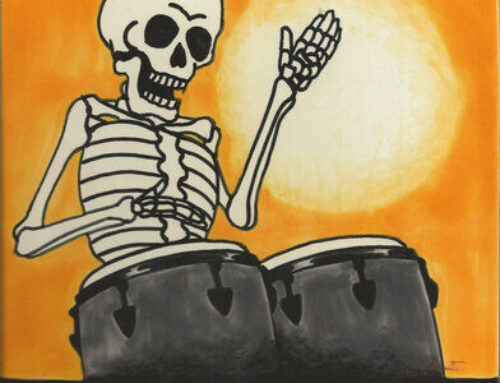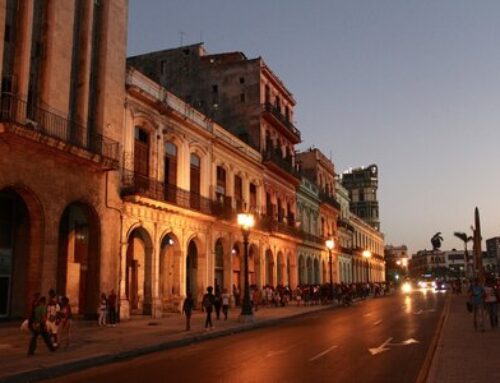The following is a guest post by Tori Hogan–an author, filmmaker, and educator with an endless curiosity about the world and a heart for exploration.
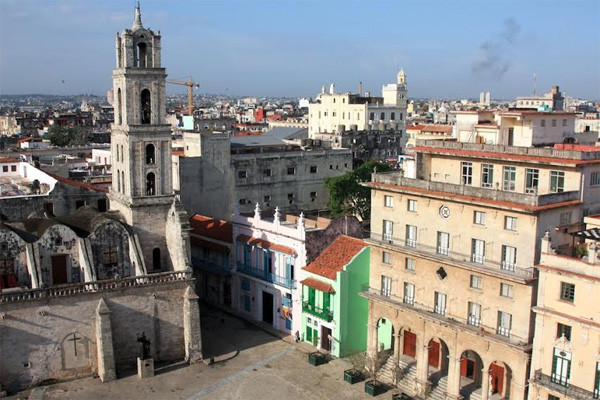 Rebuilding Old Havana: The Role of Tourism in the City’s Renewal
Rebuilding Old Havana: The Role of Tourism in the City’s Renewal
Colorful colonial buildings, sun-drenched plazas, cobblestone streets, and music in the air: that was the Havana of my imagination. However, I kept my expectations low as my taxi approached the historic center. A part of me feared that the city might not live up to my grand visions, most of which had come from photos I’d seen of the city from the 1950s. But as I stood under an archway on the edge of Plaza Vieja, I was spellbound. It was even more beautiful and charming than I had imagined.
Apparently, Old Havana hasn’t always looked this good. In fact, in the early 90s, Old Havana was seedy, dilapidated, drug-infested, and crumbling to the ground. Its revival over the past two decades has been nothing short of miraculous.
“Twenty years ago cars would park here, and these buildings were in bad shape,” Pedro said as we strolled through the now gorgeous San Francisco square. Pedro Morales is a guide for San Cristobal Tours, and he kindly volunteered to show me how Old Havana has been transformed. San Francisco square is a perfect case study. What used to be a neglected, trash-strewn area next to one of Havana’s most important churches has now become a favorite spot for wedding photos, Sunday strolls, and special events. The church has been completely renovated— transformed from a dirty storehouse into a first-rate concert hall with extraordinary acoustics, the homes and offices circling it have had major facelifts, and cars have been prohibited, opening up the area for pedestrians. This is just one of four squares in Old Havana, along with many of the connecting streets, that have benefitted from significant restoration work.
The success of the city’s overhaul required exceptional vision from the start. In the early 90s, after the Soviet Union fell and Cuba no longer had the financial backing of a close ally, the country fell into a major economic crisis. Understandably, renovating Old Havana wasn’t at the top of the Cuban government’s concerns at that time. But a few visionary leaders, including the Chief Historian of Havana, Eusebio Leal, knew that reviving Old Havana and enticing tourists to return would be essential to the country’s economic future.
The solution was to form a corporation called Habaguanex Tourist Company that generates income through the ownership of local hotels, restaurants, shops, and tour companies. The profits from the company are then used to fund the rehabilitation of Old Havana. This brilliant social business and experiment in sustainable development has worked surprisingly well. The more they renovate, the more tourists are attracted to Old Havana, which then generates more income through the hotels, restaurants, etc., and keeps the cycle going for more renovations. Habaguanex is also dedicated to improving the lives of local community members and has instituted an array of social programs for children, disabled persons, and the elderly.
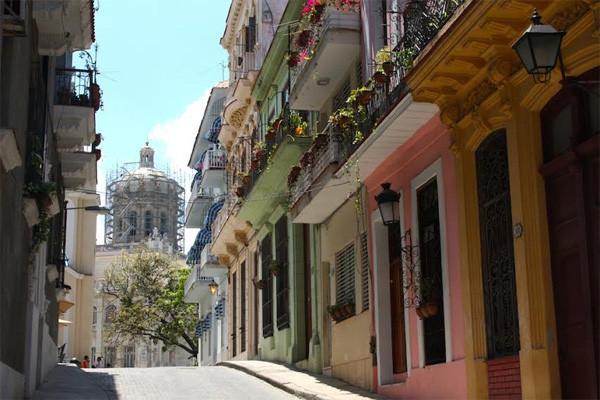 Orlando Blanco, the President of San Cristobal Tours (one of the agencies owned by Habaguanex), said that a unique aspect of the rehabilitation of Old Havana is that the town is being “preserved alive.” It’s not just a place for tourists to visit, it’s a real community where people live and work. As Pedro and I walked across the beautifully restored Plaza Vieja, the intersection between tourism and community was obvious. A local elementary school had set up cones in the square and twenty kids in red uniforms were enjoying physical education class outside. Pedro and I side-stepped an energetic relay race, and found a seat at a cozy cafe. Fortunately, the benefits to the 70,000 locals living in the historic center have been extensive. According to Orlando, “they’re a comprehensive part of the project, and they defend the project.” Property values have sky-rocketed, job opportunities are plentiful, and the illicit activities that used to plague the neighborhood have been cleaned up.
Orlando Blanco, the President of San Cristobal Tours (one of the agencies owned by Habaguanex), said that a unique aspect of the rehabilitation of Old Havana is that the town is being “preserved alive.” It’s not just a place for tourists to visit, it’s a real community where people live and work. As Pedro and I walked across the beautifully restored Plaza Vieja, the intersection between tourism and community was obvious. A local elementary school had set up cones in the square and twenty kids in red uniforms were enjoying physical education class outside. Pedro and I side-stepped an energetic relay race, and found a seat at a cozy cafe. Fortunately, the benefits to the 70,000 locals living in the historic center have been extensive. According to Orlando, “they’re a comprehensive part of the project, and they defend the project.” Property values have sky-rocketed, job opportunities are plentiful, and the illicit activities that used to plague the neighborhood have been cleaned up.
I was somewhat surprised to hear that not long ago, many tourists visiting Cuba would bypass Havana and head straight to beaches like Varadero, a particular favorite of Canadian and European visitors. “In the 80s and 90s Havana wasn’t much of a destination,” Pedro said. “Now you see groups from the U.S. who gladly spend a whole week only in Havana!” He told me that now, thanks in large part to the extensive renovations, 90% of tourists come through Havana for at least a day. This new tourist traffic not only increases revenue for continued renovations, but also gives visitors a better picture of Cuba’s history, culture, and architecture.
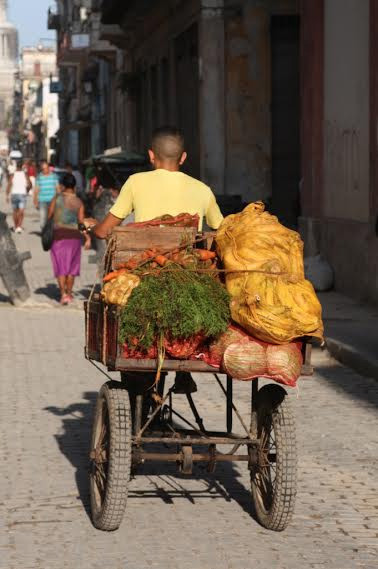 For those of you who don’t want to see a historic city all new and pristine (and feeling pretty but fake), worry not. Old Havana still has its famous grit and charm. The renovations have been done with impeccable taste, simply bringing the area back to its old glory. To me it felt authentic, beautiful, and everything I imagined Havana to be.
For those of you who don’t want to see a historic city all new and pristine (and feeling pretty but fake), worry not. Old Havana still has its famous grit and charm. The renovations have been done with impeccable taste, simply bringing the area back to its old glory. To me it felt authentic, beautiful, and everything I imagined Havana to be.
Upcoming Journeys to Cuba
Are you interested in learning more about upcoming journeys to *Cuba? Here are some of the tours we have coming up.
- Nubian Sadhana Cuban Dance & Yoga Immersion
May 1-8 , 2015 - Cuba Sea Turtle Adventure
June 14-21, 2015 - New Year’s In Cuba: Celebrating Culture and Community
Dec 27, 2015 -Jan.4th, 2016
*Altruvistas offers consultation services and in the case of journeys to Cuba, operates in a limited capacity and with only legal and licensed TSPs (Travel Service Providers issued by the US Treasury Department’s OFAC).




